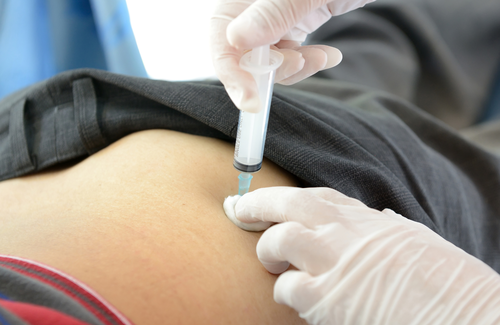
In the rare cases where people acquire HIV despite taking PrEP (regular medication to prevent HIV infection) consistently and correctly, the medication can suppress replication of the virus and delay the production of antibodies. This makes these breakthrough infections hard to detect, especially with standard antibody tests. In the case of injected PrEP, the result of delayed diagnosis can be the development of mutations resistant to integrase inhibitors, potentially limiting future treatment options.
Wider use of PCR testing in PrEP programmes would help identify infections earlier, the Conference on Retroviruses and Opportunistic Infections (CROI 2022) was told last week.
As reported separately, the HPTN 083 study continues to show that injected PrEP every two months is 66% more effective at preventing HIV infections than daily oral PrEP in gay and bisexual men and transgender women. The total number of infections now seen among the 4566 participants is 72 in people taking daily tenofovir/emtricitabine pills and 25 in people on cabotegravir injections every two months. This equates to an annual incidence of 1.57% on oral PrEP and 0.54% on cabotegravir injections.
The majority of the 25 infections in people allocated to cabotegravir occurred in people who were at least a month late for an injection.
However, there have been seven infections in people who were on time for their injections and who appear to have had satisfactory drug levels.
At CROI 2022, Professor Susan Eshleman of Johns Hopkins University, part of the HPTN 083 team, presented a detailed analysis of six cases in which resistance mutations to cabotegravir were later discovered. Four were breakthrough cases that were discussed at last year’s conference. One was a participant who acquired HIV during the 'lead-in' period of five weeks on oral cabotegravir pills. The last was a person who already had undiagnosed HIV when he started the study (so-called incident infection).
Testing for HIV in HPTN 083 involved a rapid, point-of-care test taken at a PrEP appointment which, if positive or indeterminate, was then confirmed by a laboratory antibody/antigen test – the kind of tests used in routine care.
However, retrospective testing was also conducted at the University of Pittsburgh study centre. This used two PCR assays that can detect HIV RNA – which means they can detect HIV infection before antibodies to HIV start being made. They used the Aptima HIV-1 RNA qualitative assay; ‘qualitative’ means it’s a yes/no assay – it just says whether it finds infection or not. If infection was detected by the qualitative assay they also used the Abbott RealTime HIV-1 viral load assay, a quantitative assay, which counts viral load.
Retrospective testing found that in the six cases examined, the first time HIV RNA could be detected was between 3 and 20 weeks earlier than the HIV rapid antibody test. It also found that in all four cases of people who acquired HIV while receiving cabotegravir injections, their viral load became undetectable for a period after their initial positive PCR test.
The drug levels of cabotegravir appeared to be adequate to prevent infection in all four of these cases, so it remains unclear why they acquired HIV. The blood cabotegravir level was generally near 1.33 micrograms per millilitre, which is eight times the level required to inhibit HIV by 90% (the IC90). In monkey studies, it was found that levels of three and four times the IC90 were sufficient to inhibit rectal and vaginal infection by 100% and 87% respectively.
In three cases, it cannot be ruled out that they may have acquired HIV resistant to integrase inhibitors like cabotegravir, but in one case there was definitely no pre-existing resistance.
Four infections while on injectable cabotegravir
In the first case, the participant tested HIV antibody positive, with an indeterminate confirmatory test, 37 weeks into the study, after their fifth cabotegravir injection. Retrospective PCR testing found they had had HIV at week 17, at the time of their third injection 20 weeks earlier. At this point their viral load was 860, but it became undetectable in tests on samples collected at weeks 23 and 26.
This person definitely did not have integrase inhibitor resistance at week 17 or week 23. But at week 26, the R263K resistance mutation to dolutegravir and cabotegravir was found. Interestingly, while HIV with this mutation is resistant to cabotegravir, it also has damaged replicative capacity, so the viral undetectability could have been the result of resistance developing. However, if their HIV had been detected at week 17, they could have started antiretroviral therapy (ART) and resistance might not have developed.
In the second case, the person tested antibody positive at week 26, at the time of their fourth cabotegravir injection, again with an indeterminate confirmatory test. A qualitative test found HIV at week 19, seven weeks earlier. At this point they had a viral load too low (below 40) to test for resistance, but by week 26 they had the Q148R resistance mutation, which confers tenfold resistance to cabotegravir.
Delays in starting ART led to them developing another resistance mutation, G140A, by week 39, when they finally did start ART. This also confers tenfold resistance. By this time their viral load was over 152,000, although their ART – based on the protease inhibitor darunavir – quickly suppressed the virus. Although it can’t be ruled out that this person had pre-existing resistance, ART at week 19 would have prevented them developing the second mutation.
The third person tested positive well over a year into the trial, at week 71, at the time of their tenth cabotegravir injection. Retrospective testing found that they had HIV at week 55, at their eighth injection 16 weeks earlier. At that point they had a viral load of 130 and a resistance mutation called N155H. It is possible they acquired a strain of HIV with this mutation, which has caused treatment failure in people taking dolutegravir. However by week 62, they had already acquired the Q148R mutation too, and by the time of their positive antibody test at week 72, R236K too. Using an RNA test for HIV screening could have stopped them at least acquiring the other two mutations.
Finally there is the case of the person, mentioned in last year’s report, who had an HIV infection so hard to detect that they were not convinced the results showed they had HIV, and they actually took a course of post-exposure prophylaxis. This person had a positive antibody/antigen test at the time of their sixth cabotegravir injection, at week 41. Retrospective testing showed a positive qualitative RNA test at week 27, just after their fourth injection and 14 weeks before their antibody test.
However, throughout their time in the study they never had a viral load over 40, and confirmatory antibody tests kept producing indeterminate results. This also meant that resistance tests would not produce a result. However, at week 67, a test did find they had the N155H integrase resistance mutation, plus another one called S230R which further reduces sensitivity to dolutegravir threefold.
This is an interesting case of someone who appears to have acquired a very low-level infection, possibly due to PrEP reducing the viral load but not suppressing it completely, so detectable resistance eventually arose. Some time after exiting the study the person eventually developed a viral load of 1000 and started darunavir-based ART.
Two other infections
In two other cases where people acquired cabotegravir resistance, they tested antibody positive after receiving one or two injections, but retrospective testing showed they had acquired HIV before starting injections and in one case before entering the study.
The first person tested antibody positive at week eleven after they had received their second injection, but PCR tests showed they already had HIV by week four, when they were still taking oral cabotegravir and seven weeks before they tested antibody positive. At this point they already had three minor integrase inhibitor resistance mutations, and might have entered the study with them, which might have explained why oral cabotegravir didn’t work. But at the time of their second cabotegravir injection in week nine they had developed Q148R and by week eleven two other major mutations that would severely impair the effectiveness of integrase inhibitor-based therapy.
In the other case, the person tested HIV positive in week eight of the study and after one cabotegravir injection, but retrospective testing showed they already had HIV when they entered the study, with a viral load of over 50,000. This fell to 200 at the time of their first injection, however, showing that cabotegravir might have reduced the viral load and thus delayed the formation of antibodies.
In this case, if they had had PCR testing when entering the study they would have been put on ART rather than PrEP. In the other cases, if PCR testing had been done, people would have still entered the study but their HIV infections would have been detected sooner and possibly their full treatment options preserved.
Implications
It’s still uncertain in some of the cases whether people acquired HIV due to pre-existing integrase inhibitor resistance in their sexual partners’ viruses, or if there were transient troughs in their drug levels. In the first two cases, the participants experienced transient falls in their cabotegravir levels, one to four times the IC90 level and one to the IC90 level, after stopping their oral cabotegravir and receiving their first injection. At this time, when levels are building to a steady state in the tissues, cabotegravir levels might dip, but there’s no evidence that this was when HIV infection happened.
What these findings imply for clinical practice remains to be seen. If all people receiving injectable PrEP had to have sensitive PCR tests and possibly resistance tests before starting, this might be a barrier to the availability and affordability of injectable PrEP. It is important to reiterate that we have only seen 25 infections among 2244 people taking cabotegravir over a period of 4.4 years, and that only seven of them can’t definitely be ascribed to lapses in adherence.
The bottom-line finding of HPTN 083 remains that the injections were better at preventing HIV than the daily pills, because adherence was more reliable. But among people who are able to maintain good adherence to oral PrEP, the pills may offer equal or better protection. What it means is that gay and bisexual men and trans women will soon have a choice of what kind of PrEP to take.
Eshleman S et al. CAB-LA PrEP: early detection of HIV infection may reduce InSTI resistance risk. Conference on Retroviruses and Opportunistic Infections, abstract 95, 2022.

